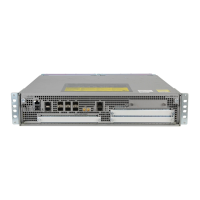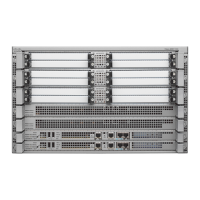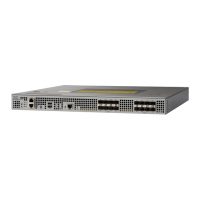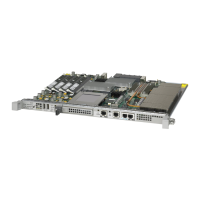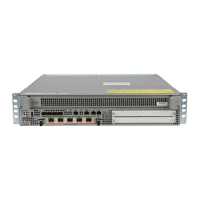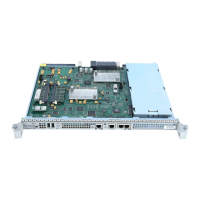27-7
Cisco ASR 1000 Series Aggregation Services Routers SIP and SPA Software Configuration Guide
OL-14127-08
Chapter 27 Classifying and Scheduling Packets for ASR 1000 Series
Information About Ingress Classification
SPA-Based Classification
Ethernet and ATM SPAs perform classification at the SPA level. In the SPA-based classification model,
the SPA performs both L2 and L3 classification, and decides on the priority of the packet. After
classifying the packets into high priority and low priority, the SPA has unique SPI4 channels per priority,
and all the high-priority packets are sent on separate SPI4 channels other than the low-priority SPI4
channel. In such a scenario, the SPA queues the packets on high SPI4 channels to high-priority buffers
and low-SPI4 channels to low-priority buffers. After the packets are classified into high priority and low
priority, the packets are sent to the ESP for further processing.
SIP-Based Classification
POS SPAs, channelized, and clear-channel SPAs support packet classification at SIP level. In SIP-based
classification, the SIP does the classification for SPAs and classifies the packet into high-priority and
low-priority.
Commands have been introduced in Release 3.1S to configure SIP based classification. To classify
high-priority packets such as IPv4, IPv6, or MPLS, in a SIP or SPA, the classification template is defined
using the ingress-class map index command. The classification template-specific details are defined
inside the template, and the template is attached to an interface using the plim qos class-map index
command.
Default Classification
Commands are used to configure the L3 packet classification criteria. If no L3 classification rule has
been configured, the SIP classifies the packet with the following L3 settings as high priority by default:
• IPv4 DSCP-based— If no values are specified as high priority for IPv4 DSCP values, the system
considers packets with DSCP EF as high priority.
• IPv4 precedence-based— If no values are specified as high priority for IPv4 precedence values, the
system considers packets with precedence 6-7 as high priority.
• IPv6 TC-based— If no values are specified as high-priority for IPv6 DSCP values, the system
considers packets with DSCP EF as high priority.
• MPLS EXP bits— If no values are specified as high-priority for MPLS EXP values, the system
considers packets with EXP values 6-7 as high priority.
High Availability and Online Insertion and Removal
• CLI configured under an interface are retained after SPA online-insertion-and-removal (OIR). When
one type of SPA is replaced by another type of the SPA, the interface configuration is not retained.
However, if the earlier SPA type is reinserted, the configuration added on that SPA type is restored.
• All the configurations are synced to the standby route processor (RP). Hence, the router
configuration is retained even after the RP switchover.
Configuring the Ingress Classification
The following section provides configuration details for classifying IPv4, IPv6, and MPLS packets for
POS, serial, channelized, and clear-channel SPAs.
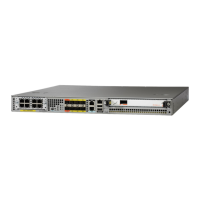
